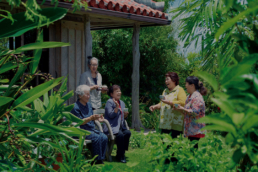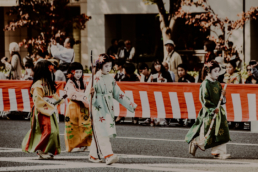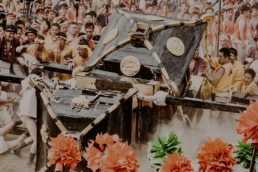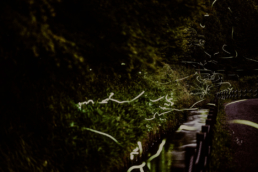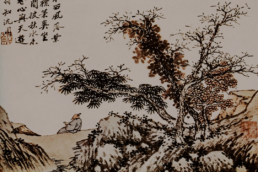Okinawa and The case of the over centenarians
The Japan Italy Bridge column continues to promote in-depth studies related to the world of Japan, today we are talking about Okinawa and the case of the over one hundred-year-old population.
"At 70 you are only a child. At 80 you are a young man. At 90, if your ancestors call you to heaven, ask them to wait until you are 100 years old. Then you can think about it". So says an ancient saying in Okinawa, unfailingly quoted every time you get ready to talk about its mythical inhabitants. Words that seem to find confirmation, even in ancient legends that would speak of this place as a "Land of the immortals".
Okinawa 沖縄 The case of the over centenarians
Guest Author: Flavia
A few years ago even the show "Le Iene" brought the case of Okinawa to prime time, giving us a very nice report. The longevity of its inhabitants and even more so the incredible quality of their ageing is immediately witnessed by the first two ladies who appear in the tv show. I think that whoever saw them was amazed: I don't lie if I say that they show something like 15 years less! Unbelievable. As noted by the journalist Nadia Toffa, sent by the tv show in question, we also have them here in Italy. So the point is, how do you get to those ages. That is: with what quality of life? Usually, the pains of our elderly people, as we know, are such as to affect the quality of their last journey of life. As a society, it is now accepted that illness and loss of autonomy are what is hopelessly awaiting us when we cross those age thresholds. Well, the case of Okinawa's (super-) grandparents shows us that things don't have to be like that! And that it is in everyone's power to ensure psycho-physical well-being during, starting from ... as soon as possible! The sooner you start to treat yourself, the better you can prepare for your old age.

photo credits: mediaset.it
The typical ailments of our western societies - which often even young people(!) like to experience - Okinawa's elders almost don't know what they are. The incidence of diseases related to senility or degenerative diseases such as osteoporosis, Alzheimer's disease, sclerosis, cancer... is very low.
Okinawa: blue zone, paradise of longevity
These people have an extraordinary quality of life own on this island. We are talking about people who have never been to the hospital, who have never taken medication... who are even able to continue working or driving their car beyond the age of 90/95. Who in any case have a margin of autonomy unthinkable for a local elderly person, except in sporadic cases. Among them, the small village of Ōgimi stands out for the high concentration of centenarians compared to the total number of inhabitants. In reality, a case of similar longevity is present, you will know, also in our house: in the nearby Sardinia. Not by chance: Okinawa, Sardinia, the Greek island Ikaria, the Costa Rican Nicoya and a small community near Loma Linda in California, all fall under the name of "blue zone".

photo credits: ilviaggio.biz
Any area in the world where life expectancy is higher than the general average is called the "Blue Zone". Real "paradises of longevity" that attract researchers from all over the world to try to capture the "secret" of their populations. In this sense, Okinawa and its inhabitants even surpass even mainland Japan, which does not lag behind in terms of quality of life, but has a higher incidence of disease, for example.
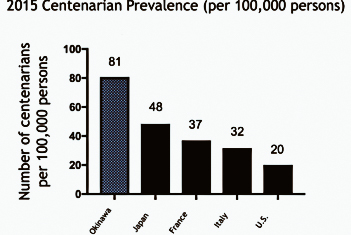 photo credits: orcls.org
photo credits: orcls.org
But who are the Okinawans? Let's first find out who we're dealing with.
Identikit of the Japanese "tropics"
Okinawa is the main complex ( 沖縄諸島 Okinawa-Shotō ) of the Ryūkyū archipelago and is located between "mainland" Japan and Taiwan. It consists of a main island of the same name plus other smaller islands. Naha ( 那覇 ), is its capital. It was named prefecture of Japan in 1879 although the Ryūkyū complex ( 琉球諸島 Ryūkyū -Shotō ), which incorporated it, was formally annexed in 1874. At that time Japan was in the process of modernization and this was matched by a process of unification of all the territories of the archipelago under a single flag.

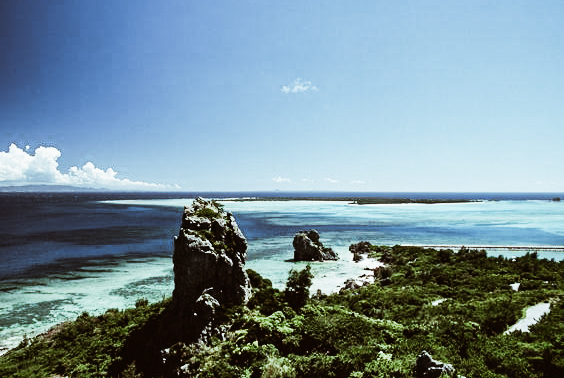
photo credits: lacooltura.com, pinterest.it.
Before 1874 Ryūkyū was an autonomous kingdom, whose foundation in the 15th century led to the unification of the islands of Okinawa. Formally it was recognized by the Tokugawa - lords of Japan until 1868 - under the jurisdiction of the fief of Satsuma (today Kagoshima Prefecture). In fact, however, it was independent, so much so that it was the fiscal kingdom of both Japan Tokugawa and, even before that, China.
Okinawa is a rather peculiar region, more in its own right than the rest of Japan. It is influenced by China and South-East Asia, due to the frequent trade and cultural exchanges maintained by the Ryūkyan Kingdom over the centuries. Okinawa cuisine itself and Karate, the made-in-Okinawa martial art par excellence, are the result of such interactions.
The lush nature of these islands, made up of numerous coral reefs and extensive rainforests, together with a sub-tropical climate, makes Okinawa a true paradise. It is not uncommon to find it referred to under expressions such as "tropical corner" or "Caribbean" of Japan. A climate that is somewhat reminiscent of that of the blue zones of Sardinia and Ikaria, which are also islands. I am not surprised that paradises like these can host "elixirs" of long life.
But let's see what researchers' discoveries tell us about Okinawa's elixir.
The ORCLS researchers' studies
The Okinawa Centenarian Study (OCS), is the longest centenarian study currently in existence. It is conducted by the Okinawa Research Center for Longevity Science (ORCLS) research team, which has been reviewing various aspects of local life since 1975. Among these, social, psychological and spiritual aspects are also given high consideration. Professor Craig Willcox, interviewed in the service by the Hyenas, is one of the leading researchers. Willcox tells the Hyenas' cameras about the discoveries his team has made over the years. First of all, the presence of a particular gene, FOXO3, readily christened the "longevity gene", was observed. However, the researchers found that longevity and longevity quality are inversely proportional to a number of health risk factors that were present before the age of 50. That is, the chances of reaching at least 85 years of age in good health increase if there are no more than 7 risk factors before middle age. Conversely, with more than 7 factors, Willcox tells us that the odds can be as high as 0%.
And here are the risk factors:
- Hyperglycemia (with risk of diabetes)
- Hypertension (with risk of heart attack or stroke)
- Excessive alcohol consumption
- Low level of education (education would foster a greater awareness of what it means to have a healthy lifestyle)
- Being overweight
- Poor diet (lack of vitamins, proteins, mineral salts)
- High triglycerides (with risk, for example, of arteriosclerosis)
- Low gripping force in the hands
- Smoking
- Only for men: don't be married!
The latter is quite curious, as Toffa immediately notes in his interview. Willcox motivates him as follows: "women are much better [at taking care of themselves] they don't need men, they can survive without them". This is why having a woman at your side would increase the life expectancy of the average man. However things may be, if we think that historically Okinawa women play a key role in Okinawa society, this could take on a wider meaning. And good Okinawan women!
Not only Okinawa DNA
But the research does not end there. Willcox says he and his team examined a sample of 8000 men with Japanese ancestors in their genealogy. Considering the two analysis variables, presence of the FOXO3 gene (1) and healthy lifestyle (2), they divided the subjects into 4 groups. Well: the individuals who possess the gene linked to longevity, however, have an incorrect diet, live less than those who, although not genetically predisposed, maintain a healthy diet. This clearly shows us - as Willcox says - the power that a healthy diet and lifestyle have on the physical health of individuals.

photo credits: mediaset.it
Another thing observed is that the Okinawan population does not consume more than 1100 calories per day. This is 10% less than the calories usually indicated by each nutritional table. In particular, their habit of "nibbling rather than bingeing," Willcox always explains, "is key. But a snack made from healthy food: snacks, for example, are made from dried fruit or dried fish (a snack that is also common in mainland Japan). All this in conjunction with a broader, healthier lifestyle.
Shall we find out in detail what all this consists of? Let's start with eating habits.
#1 Traditional diet
Two, are basically the principles underlying the Okinawan diet and concern quantity and quality of food.
腹八分 (Hara-Hachi-Bu): " stomach [full] for 8 parts"
That's 8 parts out of 10: "Always leave some space in your stomach...that is, eat until you are 70-80% full" explains Willcox. A guideline, it would seem, of Confucian origin, which seeks moderation rather than satiety: never fill up completely but eat what is strictly necessary. And in fact, the second elder tells journalist Toffa: "I eat what is right but never fill myself completely. I always get up with a bit of hunger".
The Okinawans are used to eat 5 meals a day (which is also recommended by local doctors), opting for low-calorie but satiating foods. Let's keep in mind the setting of the table, which is typical of Japanese cuisine. The contemporaneity of the dishes, through their arrangement in saucers and bowls, is a factor that certainly predisposes more to "small tastings" than to binge.

photo credits: travelbook.co.jp
I-Shoku-Dō-Gen ( 医食同源 ), "food and medicine, same origin", from Okinawa
For the local elderly, there is nothing healthier than lovingly caring for the garden and then feeding on the fruits of the earth. If we add marine food to these, we have our own miracle diet. This is what it is made up of:
- Greens. Especially with green leaves, yellow roots and orange roots, all containing carotenoids and anti-inflammatory agents.
- Tubers like the sweet purple potato of Chinese origin, with a very low glycemic index. Eugenio Iorio, an Italian researcher, explains: "it is there [in the purple] that these famous polyphenols [...] dialogue with our DNA and therefore help us to control the effect of free radicals";
- Legumes. Like soya beans (with protein and fibre but without fat) and soya derivatives;
- Algae, natural anti-inflammatory, ideal for free radicals and also for hair;
- Fish and the already mentioned dried fish, rich in magnesium and omega 3;
- Tea. Especially green tea and jasmine tea, anti-ageing;
- Herbs to chew like Sakuna, "herb-elixir" slimming and antioxidant;
- Fruits. Among which bitter melon Goya, used in the typical dish "Goya Champuru" and citrus Shikuwasa, anti-inflammatory, both typical of the place.


photo credits: ohayo.it
"Eating like a rainbow"
In the words of Dr Willcox, by virtue of the parade of colours that the great variety of fruit and vegetables brings to the tables of Okinawa. Variety. Another watchword in the agenda of the Okinawans who would use at least 18 foods daily. The important thing, however, is always to respect the seasonality of the fruit and vegetables. In this way, the maximum nutritional potential of the fruit and vegetables can be realised. And of course, the freshness of the food. It is also important if you decide to cook them, especially when it comes to fish and vegetables: never overcook them if you want to preserve the nutrients!
In addition to very low consumption of carbohydrates, salt and sugar are also used very little. Yes to spices, such as turmeric, and mushrooms.
What about meat?
As a result of that Chinese influence mentioned at the beginning, meat consumption is also well established in Okinawa's cuisine. But meat, as well as dairy products and cereals, are categories with a high nutritional density...so they are consumed in even smaller quantities! Even rice is eaten less than the rest of Japan and quinoa is often preferred to rice. We speak of a low-calorie diet also for this reason; because it counterbalances with smaller quantities of nutritional contributions otherwise potentially excessive. Also because vegetable and marine foods and fruit remain the true carriers of all those beneficial substances that make up the food elixir of Okinawa.
#2 Motor and mental activity
"When the body moves, the brain goes into rhythm" - this is the motto of Jim Kwik, an internationally renowned trainer who deals with fast learning. Kwik always urges even those who have to spend their days sitting down for work or study not to stay in the chair all the time but to take breaks and move around. Even just a few minutes of simple movements between breaks, as well as drinking water and making small snacks, are enough. In doing so, Kwik suggests, our performance is even better, because the brain works better if we treat ourselves this way. Exercise as a stimulator of neurogenesis and neuroplasticity: facilitates the creation of new neural connections. In short, physical movement is also a gym for the brain! That comes out strengthened. And if the brain is active the whole organism benefits. It is a vicious, beneficial circle that, when activated, becomes self-feeding. And this is also the basis for all the nutritional discourse that has just been made, as well as the other factors that we will see in a moment. Let us bear in mind that this discourse is not compartmentalised: everything is connected.

photo credits: okinawa.stripes.com
Observing the lives of our Okinawans, we find that, in their own way, they put into practice very similar things to those promoted by Mr. Kwik. The second reason for their well-being lies in the fact that they are active, not only in their body but also in their mind! The grandfather we see in the hyena service, for example, reads the newspaper every day when he returns from his morning walk. And watch out, 100 years go by, he does so without the help of glasses. Not to mention the fact that he worked in the countryside until he was 97 years old!
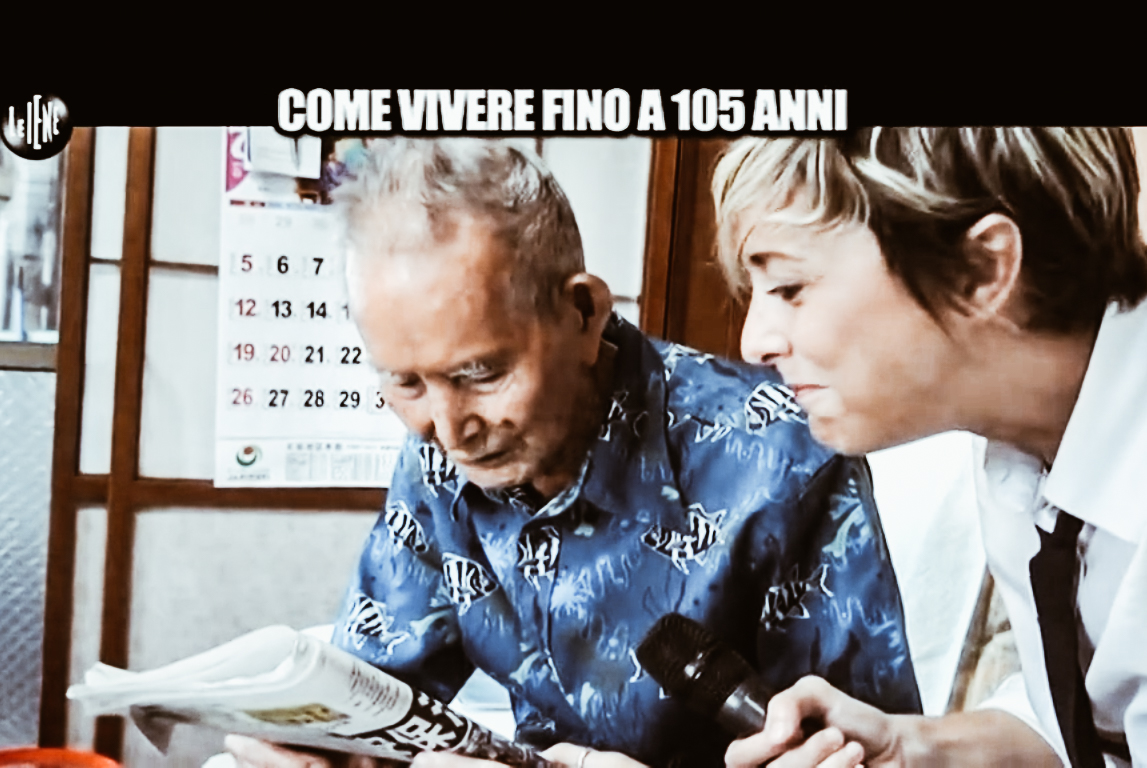
photo credits: mediaset.it
Among the activities most loved by Okinawa's grandparents - in addition to the garden, as already mentioned - we find traditional dance or dabbling with some traditional musical instrument. Or, martial arts, ideal for the body-mind-spirit system, as in the case of master Seikichi Uehara. Uehara, a few years before his death at the age of 100, still taught Karate to his students. Or again: how not to mention the weaver Toshiko Taira who, at the age of 100, continues to work as a weaver of Bashōfu, an ancient fabric used for the Kimono (produced only at Ōgimi).
#3 Interior and exterior attitude
But it's not just a question of genes and nutrition. Turn that turns you back, you always come back there: the mind (and the spirit, which in the Japanese vision is one with the mind - as the parola心 "Kokoro" or heart/mind) testifies. Once again, the vision of things proves to be decisive. The most cynical ones will be tired of always hearing "the same old tune", I know; but instead of automatically throwing it on scepticism, I would start to give more credit to the "power of the mind". There will be a reason for this if it is invoked from many quarters. Those who have somehow experienced the beneficial influences of a clean mindset, from excessively... interpretative distortions of reality, let's put it this way.
The perception of the world and therefore of oneself has the power to affect the tangible world of people. Let's think about psychosomatic illnesses for example...or even just inner dialogue: thoughts or words directed towards something can influence this something, including ourselves.
Thus, even Okinawan scholars recognise optimism as a not inconsiderable factor, as well as more tangible factors. Optimism, attention, understood not as pretending that the challenges in life do not exist...but as a different way of accepting both the good and the bad. An openness towards life, which avoids complaining and the negative vision of things. A serenity given by knowing one's own soul and place in the world, with a consequent trust in life and in others. From giving the benefit of the possibility, to everything and everyone.
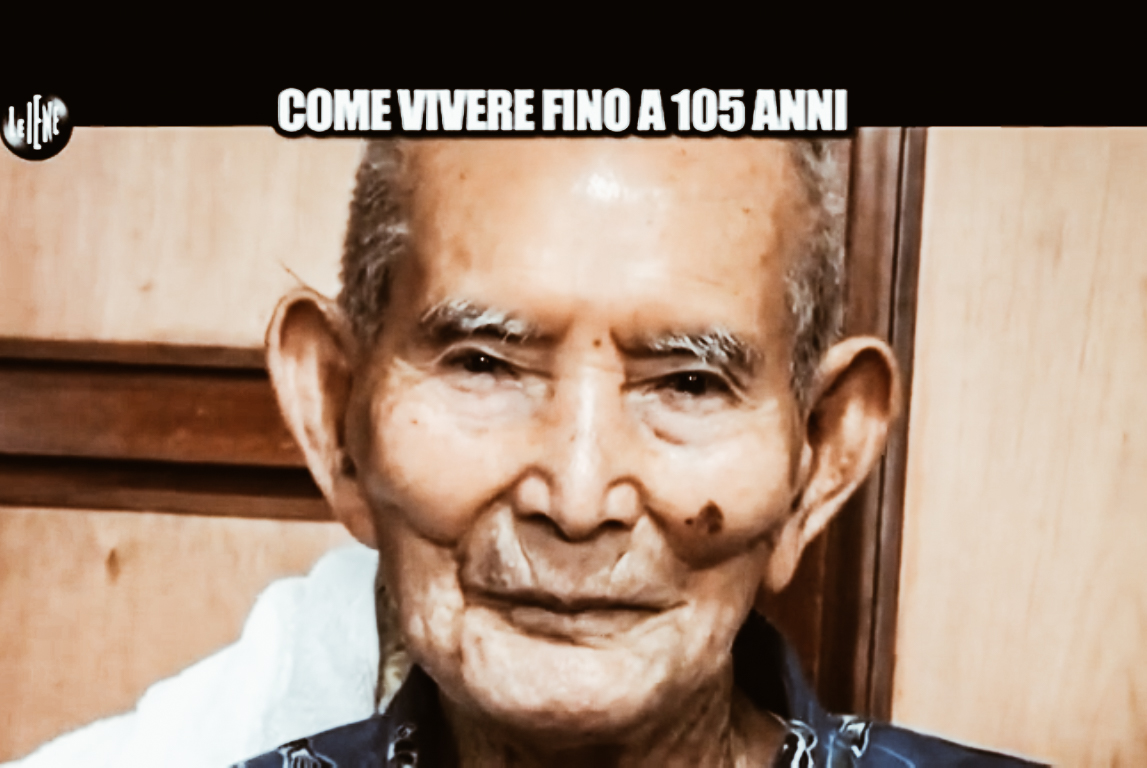
photo credits: mediaset.it
#4 Interpersonal relationships and social life
When this happens, the mind/spirit "machine" works properly and you feel better at 360 degrees. Even in the seemingly obvious little things that have their own importance, such as simple but authentic moments of conviviality. People in Okinawa generally have a very healthy social life, based on trust and balanced communication. It is often overlooked, precisely because it may seem like "the usual rhetoric", but, believe me, communication is essential to maintain healthy and satisfying human relationships. When people manage to have sincere, spontaneous, and serene communication - without any quarrels of any kind - the relationships are perfectly balanced. Without balanced and satisfying human relationships, the life of a human being is not the same. Just as moments of healthy solitude are essential, to rebalance oneself and recover one's energies, so, at a certain point, are human relationships. But be careful: they must be healthy and balanced. Just like those of our Okinawans.
The deep sense of belonging to the community that characterises their network of relationships and the value attributed to the elderly creates a buffer effect on the elderly that gives them confidence. With a community ready to support them, grandparents can thus live freely and still feel useful. Would you have me believe that the love and trust surrounding these people do not contribute to their quality of life?
#5 Spirituality
And all this takes us towards the last factor that remains for us to consider: spirituality. It "ferries us" because an approach to life like the one we have seen, from that part of the world, goes hand in hand with a certain kind of spiritual sensitivity. These two things are intimately linked if we think about it, and it could not be otherwise.
The philosophy of finding one's own reason to live, what gives it meaning, is from Okinawa, the famous Ikigai ( 生き甲斐 ). If this is missing, there is no healthy diet or strong genes to keep, for a long and quality life. Even the saying "Nan kuru nai sa ( なんくるないさ )" that is "Don't worry [it's all right] " is made in Okinawa. It indicates the profound belief that everything that happens in life has its own intrinsic meaning and that it serves us, for our growth. Having said that, everyone can and should do everything in his or her power in the situations that life confronts him or her with. If this is done, then the motto says to us "you have nothing to fear: everything you could do you have done, so it is all right, be at peace. Everything is as it should be".
Prayer and meditation, also beneficial against stress, are very present in the life of the Okinawans. In the morning, for example, they gather in front of an altar traditionally present in their homes to commemorate and thank their ancestors. This aspect of thanksgiving is something very important that potentially has an impact on the mentality and one's own worldview. And the same care of the vegetable garden already invoked higher up or even eating calmly (devoting all the attention to the act itself, without dispersing it with the TV, for example), is in truth in itself, already meditation.
Nature and environment
A spirituality in any case always close to nature...that recognizes the soul. Could it be that it is precisely the sharing with nature that has inspired these people over time to the right behaviour for a beneficial lifestyle? Although this specific aspect is difficult to quantify with empirical data, I believe so. Also because, if we take for granted that mentality and worldview can have power over our lives... why then discard a priori the power of the "spirit of nature"? Just like animals (think of pet-therapy), so can nature.
The spiritual is very present all over Japan but in Okinawa, it can count on a more uncontaminated nature, at least, compared to other places in the world. Let's remember that the increase in free radicals - potentially responsible for cancer - is also favoured by pollution as well as by bad behaviour. In order to link up with what we said at the beginning when we were thinking about the other blue areas, even the environmental factor - the ecosystem - has its own weight.
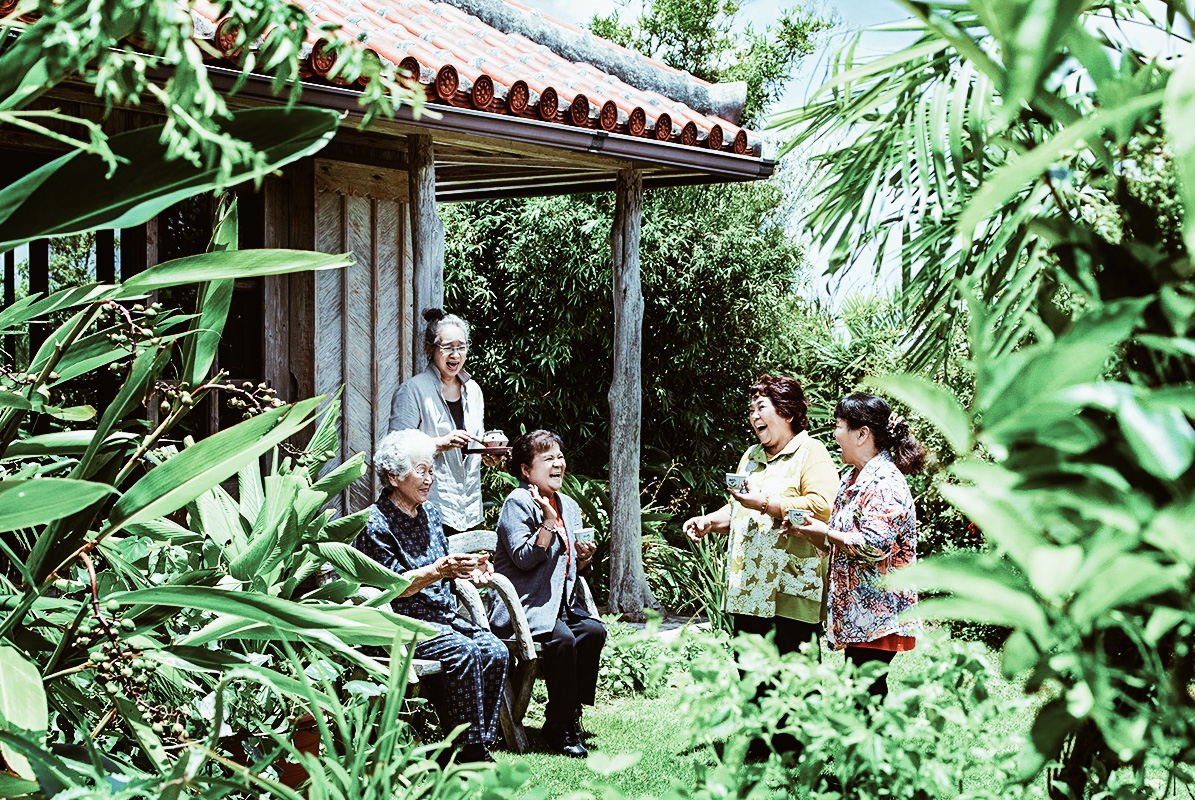
photo credits: visitokinawa.jp
The power of the Okinawa lifestyle
And so, alongside: healthy and balanced nutrition; the balanced activity of body and brain; a good relationship with life and consequently with others, here we have the spiritual dimension. But again, there is no hierarchy between these factors: just like the courses of the Japanese tables, they are all contemporary. Each one depends on the other and each influences the other. Of course, you will say, there is always a genetic predisposition. But while genes are not chosen, all these factors are in the hands of individuals. They are in their power. Good genes are undoubtedly a plus. However, as widely observed in OCS research, an individual with a healthy lifestyle lives better and for a long time, even without such a gene. While its effectiveness can also be cancelled out by the lack of just one of the other factors. This is already being demonstrated by the new generations of Okinawa. In fact, the young people of the area are at risk of losing the health benefits of their grandparents by becoming westernized between sedentariness and technology, consumption of pre-packaged food full of colourings.
Even in Italy, it is possible to have the same nutritional benefits as the Okinawa diet. After all, our Mediterranean diet, as Eugenio Iorio also tells us, is based on the same principles. Therefore, we also have the same food supplies in our lands and in our sea. We also talk about "MediterrAsian diet" if we try to integrate the two nutritional models. On the other hand, the Okinawa lifestyle and the Sardinian and Ikarian styles have some aspects in common: high consumption of vegetables and legumes, active and especially outdoor life, and finally, social life and strong family ties.
Jidai Matsuri
The Jidai Matsuri ( 時代祭り, literally "The Festival of Historical Epochs"), celebrated in Kyoto on October 22 of each year. This festival represents a magnificent opportunity to experience over a thousand years of Japanese feudal history as direct spectators in a single day.
Jidai Matsuri, the Festival of Historical Epochs
Guest Author: Myriam
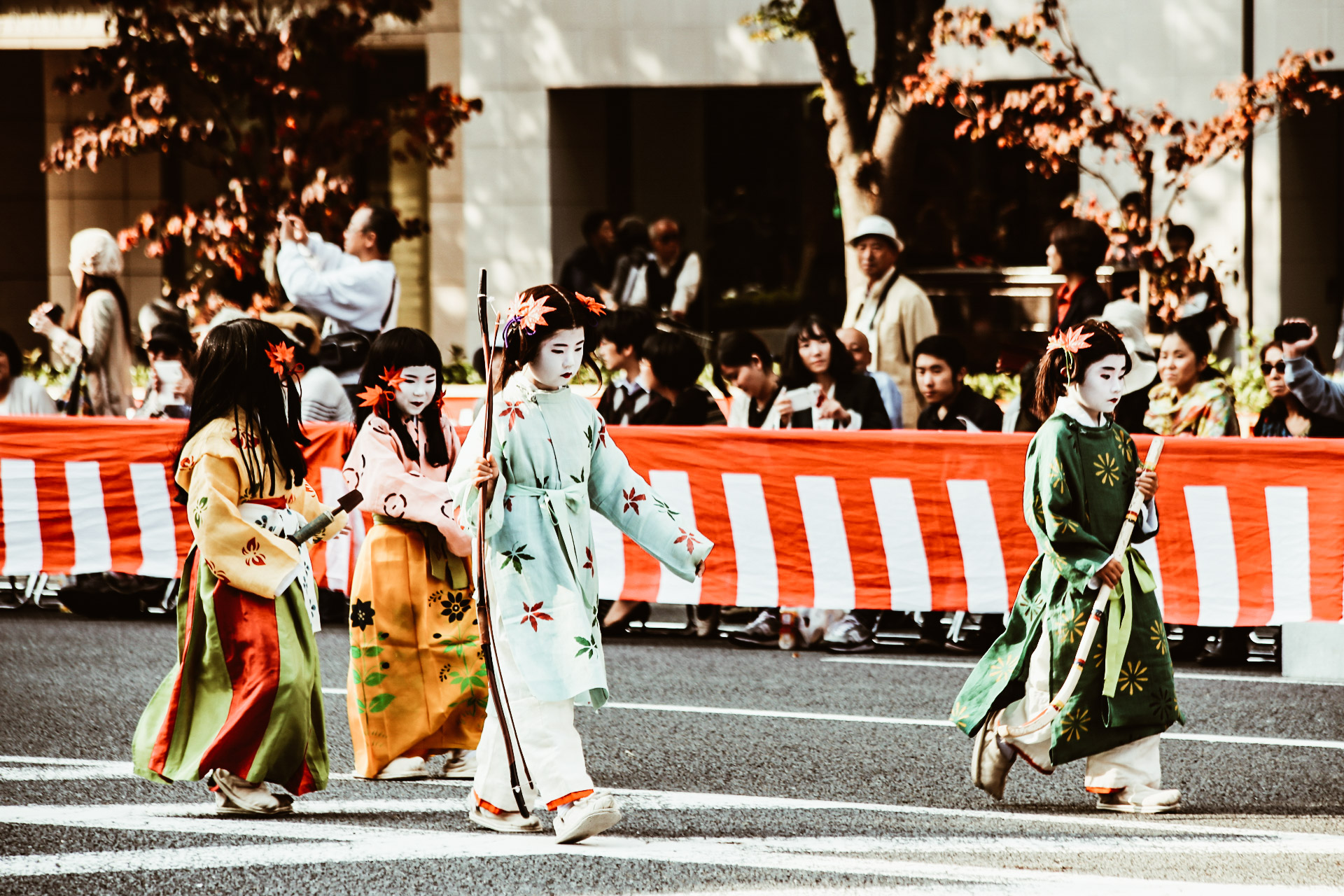
photo credits: travel-on.planet-muh.de
The origins
This festivity has its roots in the oldest history of Japan and recalls, through an impressive historical costume parade, the events and characters that have marked the life of the city since its foundation. It has been held since 794 by Emperor Kanmu (桓武天皇, Kanmu Tennō) until the transfer of the capital to Edo in 1868 by the decision of Emperor Mitsuhito.
Since its creation under the name of Heian Kyo (平安京, "capital of tranquillity and peace"), Kyoto has remained the capital of Japan almost uninterruptedly for over a thousand years. With the end of the Tokugawa Shogunate and the beginning of the Meiji Era, the entire imperial court was transferred to Edo, which became Tokyo (東京, literally "eastern capital").
In 1895 on the occasion of the 1100th anniversary of its foundation, the governments of the city and the prefecture of Kyoto established the Jidai Matsuri with the intention of restoring lustre to the ancient capital. Along with this, the aim was to honour the memory of the emperors Kanmu and Komei through the construction of the majestic Heian shrine.
A thousand years of history on the road
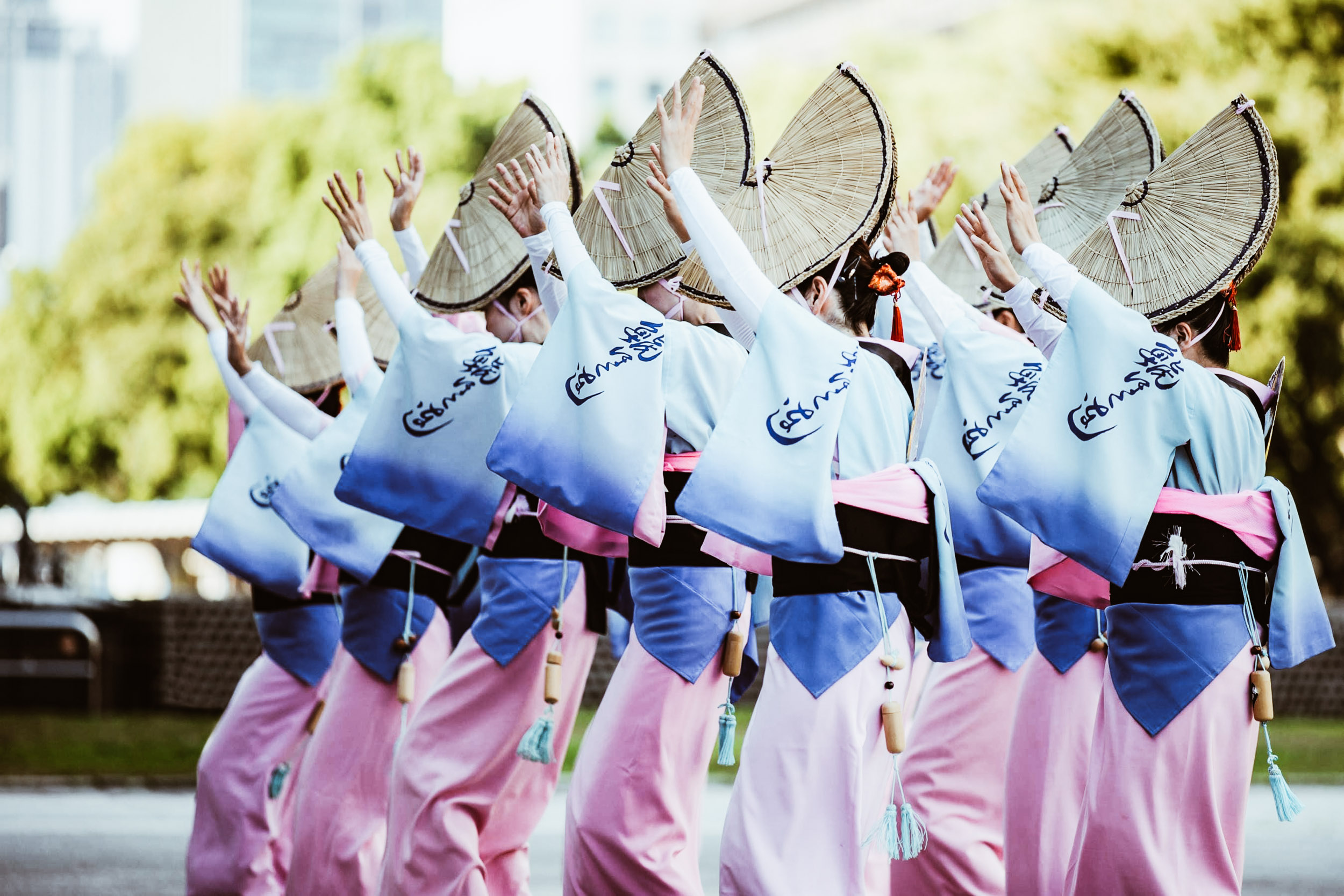
photo credits: fodors.com
Since then, on October 22 of each year, Jidai Matsuri brings back to life the splendour of feudal Japan. This allows residents and tourists to relive the life of the ancient capital for a few hours. Today, the main attraction of the festival is the Jidai Gyoretsu. It is a historical parade in which over two thousand participants take part, dressed in period costumes or in costumes meticulously reproduced by the craftsmen of Kyoto.
At the head of the parade are the mikoshi (portable sanctuaries) dedicated to the Kanmu and Komei emperors and the festival's honorary commissioners, on horse-drawn carriages in the style of the mid-19th century and from there the parade unfolds in reverse chronological order, from the Meiji Era to the Heian period, through about twenty thematic groups, which make it possible to rediscover, era after era, the characters who contributed to the history of the city, from simple peasants and soldiers to prestigious historical figures, such as the unifiers of the country Oda Nobunaga, Toyotomi Hideyoshi and Tokugawa Ieyasu, or figures of religious or cultural importance, such as Murasaki Shikibu, author of the famous "Genji Monogatari". The figures are accompanied by the music of drums and flutes, which together with the over 12,000 historical artefacts used, allow spectators to immerse themselves completely in the atmosphere of past eras.
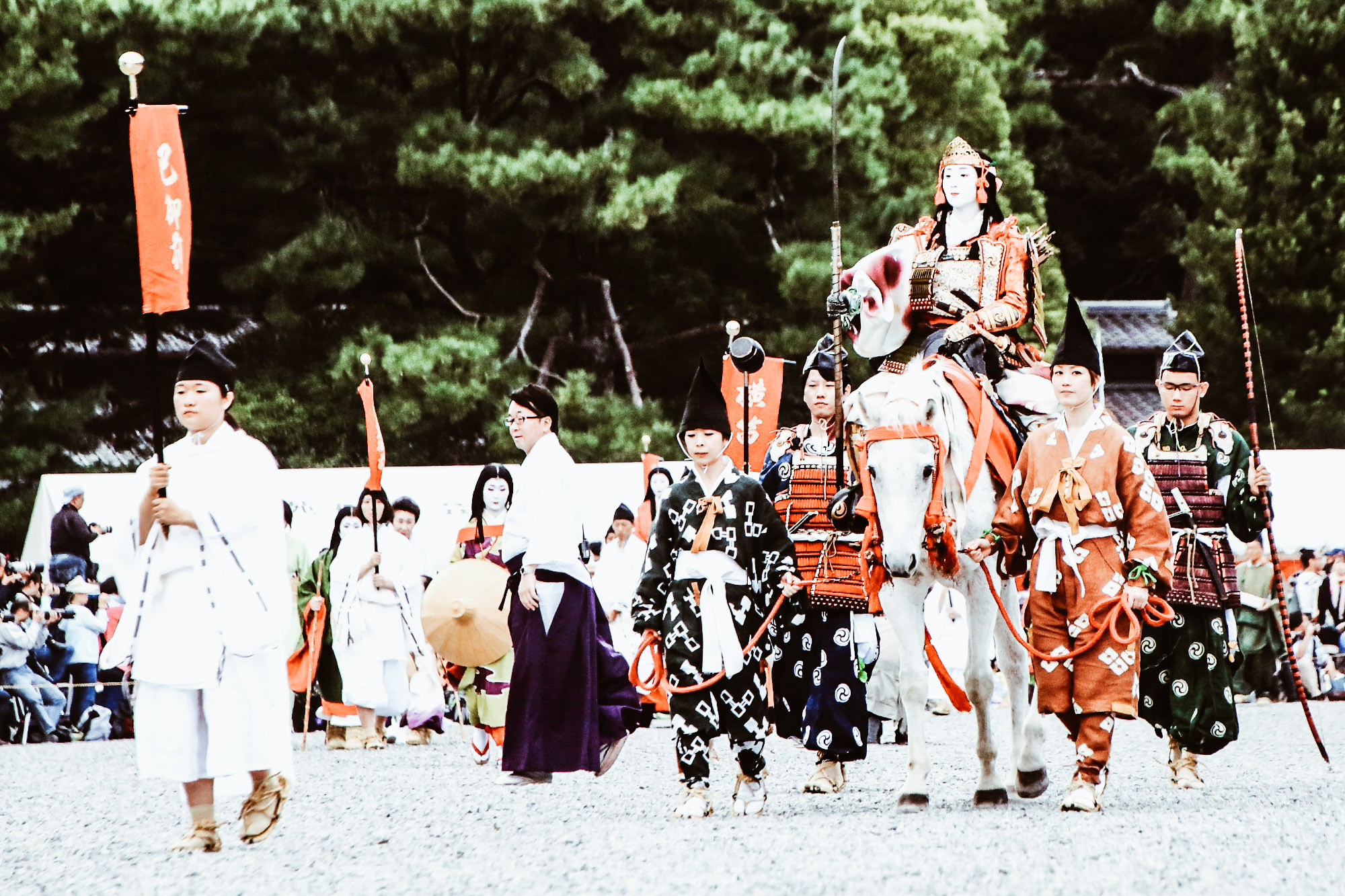
photo credits: blog.halal-navi.com
The long procession leaves at 12.00 noon from Kyoto Gosho, the imperial palace. It then winds for hours through the streets of the city centre, touching the most evocative and significant places. We see it passing by Oike and the Okazaki district, finally reaching the Heian Sanctuary. Here the Festival ends with the ceremonies foreseen by the Shinto rite.
Nada no Kenka Matsuri
From October 14th to 15th of each year, in the Matubata Hachiman Shrine (松原八幡神社) in the city of Shirahama in Himeji, Hyogo Prefecture, the Nada no Kenka Matsuri (灘のけんか祭り) one of the biggest autumn festivals in Japan is held.
Nada no Kenka Matsuri, Fighting for blessings
Author: Sara
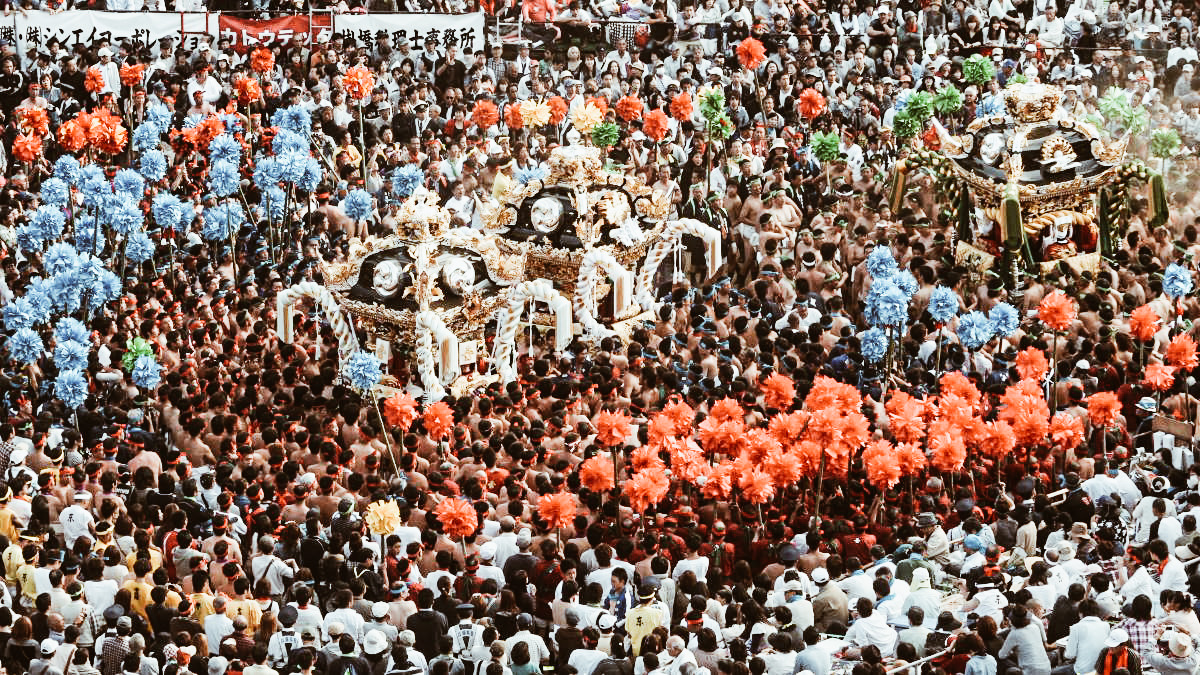
photo credits: armidaleexpress.com.au
The term "kenka"(けんか) contained in the name of the Festival means "to fight", for this reason, in the current language, it is defined as "the Festival of the fight" in which the Kami (the gods) will bless the winner of the fight with a good harvest. Given the impetuousness with which it takes place, only high school boys and men up to the age of 45 can participate in the event according to Shinto tradition. In addition, participants must belong to 7 specific villages: Higashiyama (東山), Kiba (木場), Matsubara (松原), Yaka (八家), Mega (妻鹿), Usazaki (宇佐崎), Nakamura (中村).
October 14: The Eve "Yoi-Miya" (宵宮)

photo credits: armidaleexpress.com.au
At 11:00 am everything is ready for the "Neri-dashi" parade (練りだし). The 7 Yatai (small sacred floats) from the 7 villages go to the Matubata Hachiman Shrine to receive the divine blessing, "Miya-Iri" (宮入). Here the Yatai compete in the first competition called "Neri-Awase" (練り合わせ), competing against each other. A sort of "preparation" because the real "fight" will take place the next day and will be even more difficult. At this point, the "Shishimai" takes place: a dragon dance in front of the elementary school of Shirahama.
October 15: Hon-Miya the heavy Yatai clash

photo credits: diversity-finder.net
The main event of the Festival starts at 5:00 am. The lion of the village of Matsubara (松原の獅子) celebrates the dragon dance at the Sanctuary to worship the gods. Afterwards, the ceremony moves to the ocean where the participants of the villages eliminate their impurities of the spirit by bathing in cold water (Osogi 禊). At this point, the Miya-Iri (opening ceremony) at the Matubata Hachiman Shrine is started with the blessing of the gods. At last, the thinking confrontation begins: the first are the 3 Mikoshi (the least expensive portable sanctuaries of the Yatai) of the village in charge of hosting the festival (every year the place changes alternating between the 7 villages).
The first Mikoshi (一の丸) is very heavy and is carried by men over 36 years old. The second (二の丸) is a bit lighter and is carried by men between 26 and 35 years old. The third Mikoshi (三の丸) is very light and is worn by men under 25 years old.
They fight each other twice (神輿合わせ, mikoshi-awase): first in front of the main building of the Sanctuary, then in the battlefield at the foot of Mount O-Tabi-Yama (御旅山). At the end of this clash, it is the Yatai's turn on the battlefield (Neri-awase 練り合わせ).
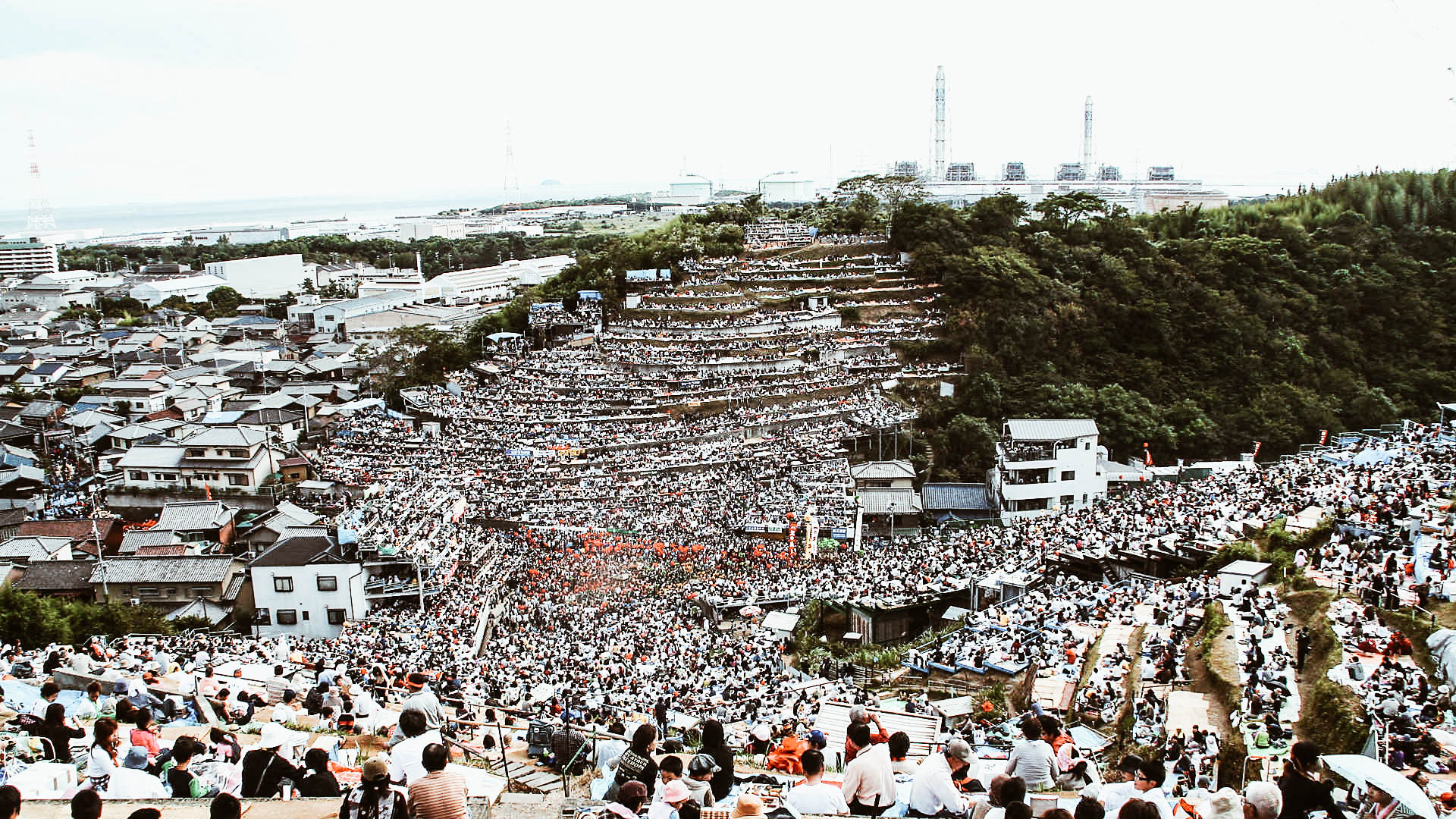
photo credits: kabegami.image.coocan.jp
The excited cries of spectators and participants make the event particularly lively and full of passion. At the end of the battle, the 3 Mikoshi and 7 Yatai are taken to the top of the mountain where prayers are said. the Nada no Kenka Matsuri ends with the descent from the mountain which will take place in the same order in which the villages have climbed.
Nagano Firefly Festival
With the advent of COVID-19, many events have been cancelled all over the world, but the firefly festival in Japan doesn't stop and this year the luminous insects dance by themselves.
The solitary dance of fireflies in 2020
Author: Erika | Source: Japan Times
It is a magical moment when in Tatsuno, in the Nagano prefecture, the sun sets and thousands of fireflies begin to dance and shine, creating a unique spectacle. Usually, this event brings crowds of visitors to the city, however, due to the coronavirus pandemic, this year the spectators are not allowed to attend this event.
In fact, in this wacky 2020, the dance of incandescent insects takes place without spectators because the event has been cancelled. Nevertheless, although many fans were disappointed, an unusually serene and unique atmosphere was created. In fact, the insects do not stop and continue to shine, turning off and on, dancing in the night air. A natural spectacle that lasts only 10 days at the beginning of summer that marks the last chapter of a firefly's life.
Katsunori Funaki says that "The glow is the courting behaviour of fireflies. They glow is used to communicate between the male and female. During the short period of 10 days, they find a mate and lay eggs for the following year".

In short, the firefly festival is a real date not to be missed. In fact, more than 30,000 perform this magic during those 10 days in Tatsuno, in the centre of Nagano prefecture. Mayor Yasuo Takei says "Historical evidence says that a huge number of fireflies were seen along the Tenryu River between the late 19th and early 20th century. These small creatures were almost extinct in the area due to the strong production of silk industries that created pollution.
However, after the Second World War, the city has worked hard to recreate and restore the suitable environment to protect the fireflies that now attract thousands of visitors during the annual summer festival. "When we have a lot of fireflies, we get a spectacular landscape full of lights, with both stars and fireflies shining reflected in the water," said Takei. A unique event and landscape.
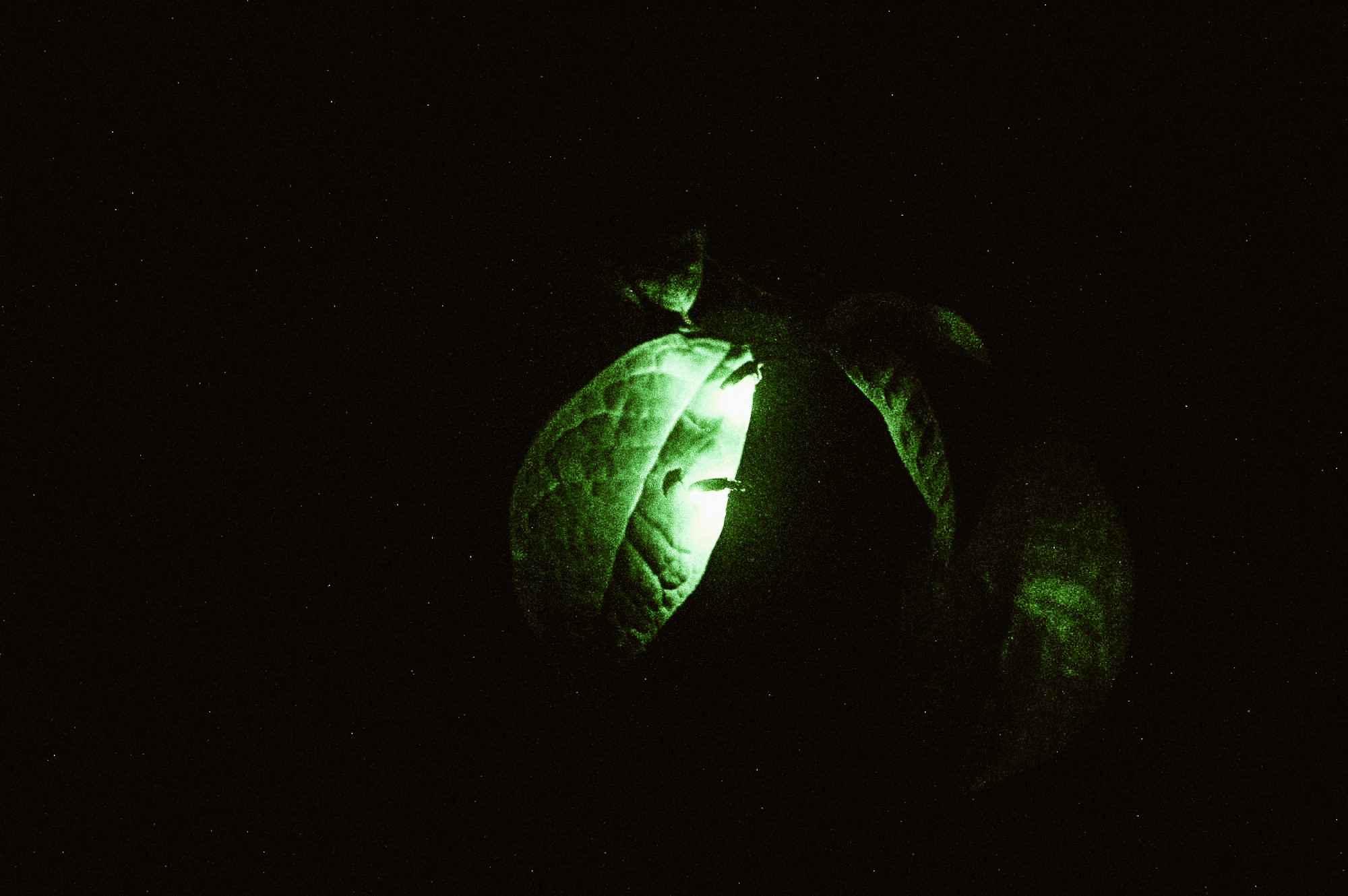
Precisely because of the strong importance that this festival has, the city has created a park with ditches to bring fresh water from the river, with waterfalls and an aquatic house rich in oxygen for insects.
Firefly festivals have been held since the end of June in many parts of Japan, and this ritual of luminous courtship is highly celebrated throughout the country.
"Fireflies are creatures that grow for over a year and fly for only 10 days to leave the next generation before they die," said the festival organizer. "We want to take care of them so that they leave their eggs for next year and we will see fireflies dance wonderfully once again.
Introduction to Japanese poetry
Italy, France, England, America and many other countries in the world offer a vast poetic production, but what is Japanese poetry like? Here we are on this fascinating literary journey to discover something more about the Land of the Rising Sun!
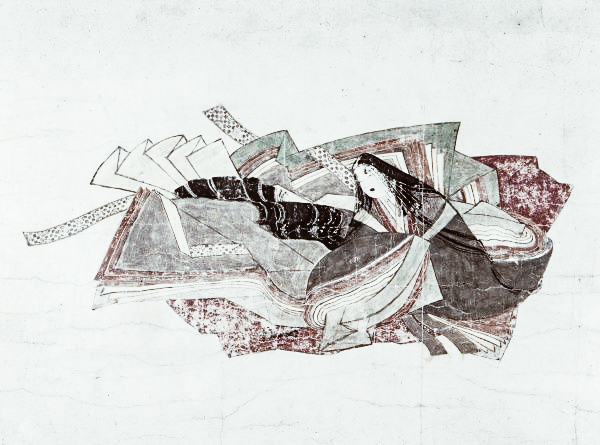
photo credits: grangerprints.printstoreonline.com
Introduction to Japanese poetry
Author: Sara | Inspiration: Tokyo Weekender
Japanese Poetry: Kanishi

photo credits: wikimedia.org
Curiously, most of the literary works of Japanese poetry were born during the Tang Dynasty, from the encounter of Japanese poets with Chinese ones. And so, under Chinese influence, Kanshi 漢詩 became the most popular form of poetry during the early Heian period among Japanese aristocrats and became increasingly popular in the modern period, especially among academics and intellectuals. The themes were free, while the forms were more rigid: the classical ones counted about 5 or 7 syllables in 4 or 8 lines, following the rules of Lushi 律詩 (rhyme on even lines with a regulated tone) and jueju 絕句 (rhyme in even lines and composed only of quatrains) based mainly on the tone of Mandarin Chinese.
The major exponents of this style are certainly Kukai, Sugawara no Michizane, Maresuke Nogi and Natsume Soseki.
Waka
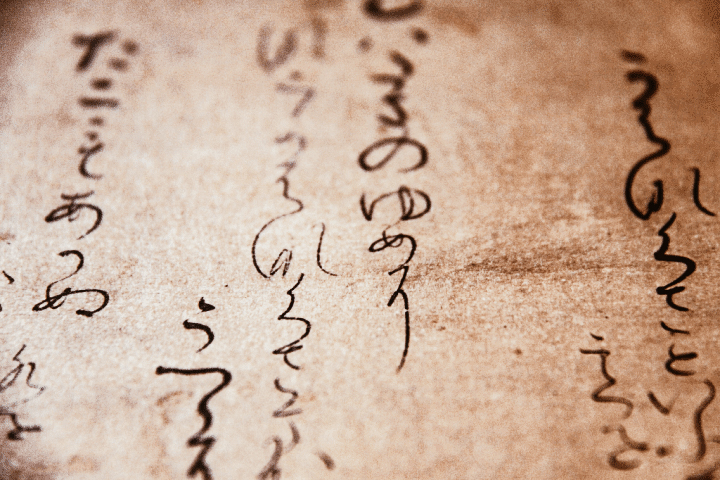
photo credits: https://matcha-jp.com/jp/289
Unlike Kanshi, Waka 和歌 was classical poetry written in Japanese with two very precise forms: Choka, 長歌, or long poems with no length restrictions. The structure is simple and consists of 2 lines of 5 or 7 syllabic sounds (which determine the accent) that ends with 3 lines of 5, 7 and again 7 syllabic sounds. Tanka, 短歌, instead has a similar structure, but they are shorter poems, often consisting of only five groups of words respectively of 5, 7, 5, 7 and, finally, 7 syllabic sounds. Waka does not follow the rhyming rules and is still very popular in modern Japan, even if now the Tanka form is preferred: the more incisive brevity reflects as always the essentiality of deep culture. The poet par excellence is certainly Machi Tawara.
Haiku
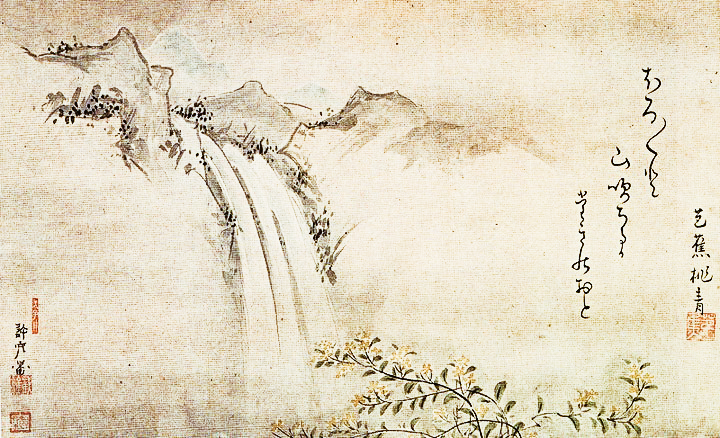
photo credits: wikimedia.org
What is the Japanese poetic composition that we consider among the most famous? Without a shadow of a doubt, it's the Haiku, 俳句. Loved by all, it is usually composed of 3 verses and 17 total syllabic sounds, schematically 5/7/5. Haiku experienced its development in the Edo period when many poets relied on this genre to describe nature and human events directly related to it. In fact, these small "compositions of the soul" express the beauty of every single instant, representing "the moment" and giving the reader that sense of "enlightenment" thanks to the images that the words evoke. The most famous and beloved poets are undoubtedly Basho, Yosa Buson, Kobayashi Issa, and Masaoka Shiki.
Our journey into Japanese poetry ends here, for now. This is a very short overview that has allowed us to enter the world of literature of our beloved Japan. What is your favourite form of poetry among the above? Mine is easy to guess: I particularly love Haiku. Here is one of my favourites by Matsuo Basho:
Let's take
the marshy path
to get to the clouds.
Continue to follow us to discover other little pearls of this oriental world and I recommend that you continue on the path you have taken: happiness is always in front of you!
Shinrin-yoku, forest bathing
The Shinrin-yoku so loved by the Japanese is what we call "forest bathing" and can be healing and regenerating. This practice, whose major exponent is Dr. Qing Li of the Nippon Medical School in Tokyo, is also becoming very famous here in the West. But let's see in detail what it is.
Shinrin-yoku, the forest bathing loved by the Japanese
Author: Erika | Source: Tokyo Weekender
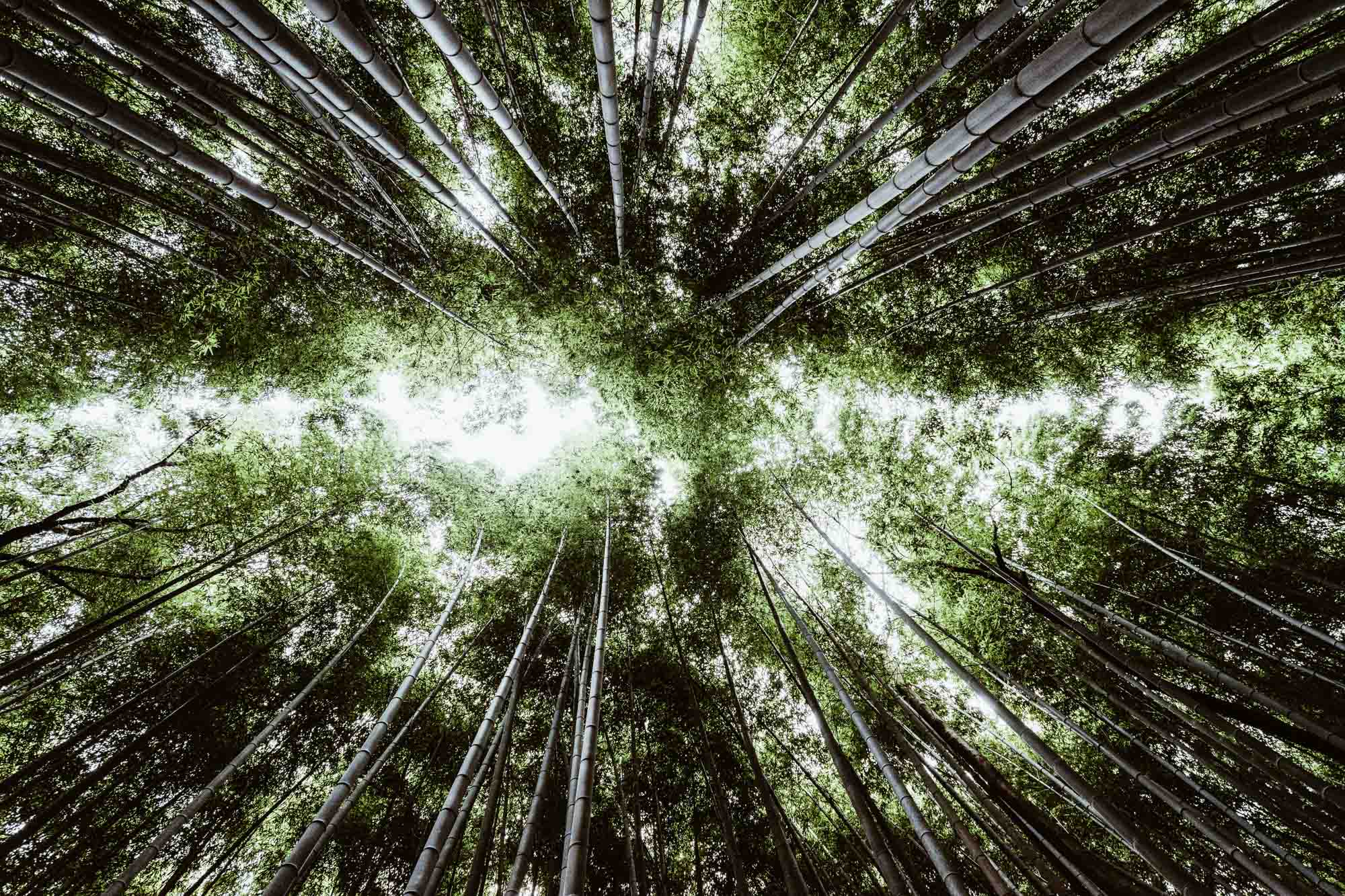
One of the world's biggest health trends at the top of the charts, the Shinrin-yoku has become internationally renowned. However, its diffusion dates back to the late 1980s in Japan. In fact, Forest Bathing has for years been considered a true practice of preventive medicine in the land of the Rising Sun. In support of this, there are numbers of researches conducted around the world that have shown how to spend regular periods of time immersed in the quiet of the woods helps to strengthen the immune defences and prevent diseases But what exactly is this about?
What is Shinrin-yoku, Forest Bathing?
Literally, Shinrin-yoku (森林浴) combines the kanji of "forest" and "bath", and is commonly translated as "bath in the forest". Promoted some forty years ago by the Japanese government, Shinrin-yoku consists of walking in the woods and applying special breathing techniques. However, forest bathing activities are not limited to breathing. In fact, whether you stay active or simply decide to take some time to relax in the forest area, this also brings you back to this practice.
First used in 1982, this term was promoted by the Japanese Ministry of Agriculture, Forestry and Fisheries to encourage healthy lifestyles and protect the nation's beautiful natural ambients. Since 1986, the Forsetale Agency together with the Green Civilization Society has indicated more than 100 areas throughout Japan where this concept of bathing is possible. Even today, there are various techniques to keep healthy, but forest bathing is one of those concepts that goes well with Japanese ideology.
In the early 2000s, several universities and research centres conducted experiments to find out how effective this practice was. The various studies were unanimously positive. In fact, it has been shown how spending time between trees reduces stress, improves mood, lowers pulse rate and blood pressure. But not only that, it also increases concentration and creativity as well as strengthening our immune system.
Perhaps sensitivity, and in particular deeply spiritual and historical respect for the natural world, has made this practice thrive in this nation.
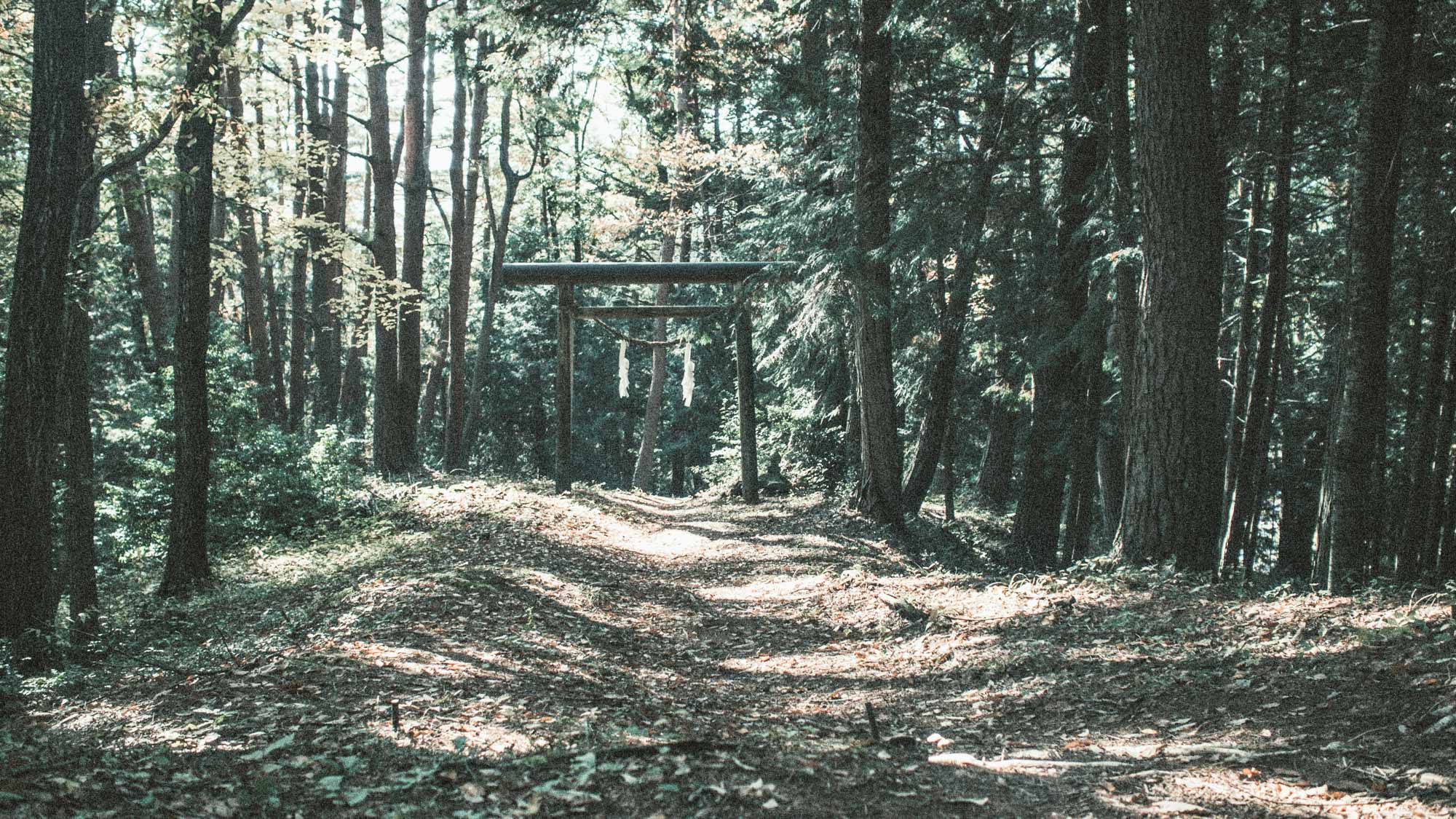
Forest Bathing becomes international
Following the strong success achieved in Japan (about 5 million people practice Shinrin-yoku in the country alone), forest bathing has also become very popular internationally. Today, in fact, it has many followers also in the West, the Duchess of Cambridge herself is a fan, as reported by The Guardian. In this regard, in England, many institutions are promoting this practice as a way to relieve daily stress.
One of the leading figures on the subject, Quing Li, president of the Society of Forest Medicine in Japan and author of the book Shinrin-Yoku: The Art and Science of Forest Bathing, commented:
"Shirin-yoku is for all intents and purposes a preventive medicine. People spend most of their lives indoors. In the case of the Japanese it is 80% of the time, and in the case of the Americans it is as much as 90%. But man is made to live outdoors. We are designed to be connected to the world of nature".
You have to try the Shinrin-yoku
Forest bathing is an easy and inexpensive activity. In fact, it can be done at any time, whatever the weather conditions and does not require special equipment or physical fitness. You can build your experience to measure and according to your needs.
In Japan, the Forest Therapy Society is a non-profit organization that identifies areas with forests and pedestrian roads that have been scientifically evaluated. Here you will find a certified "forest bathing effect". Currently, 62 areas have been certified in Japan, each of which offers "forest therapy roads" with wide access paths suitable for quiet walks, some of which are also wheelchair accessible.
In Italy, we find several destinations equipped for forest bathing, first and foremost Trentino Alto Adige. In fact, on the Renon plateau and in Fai Della Paganella, we find nature guides specialized in "balance excursions" and a "Parco del Respiro". It is precisely this region, in the last few years, has put a lot of emphasis on full immersion experiences in nature, including forest bathing.
But that's not all, also in Piedmont within the Zegna Oasis, we find three paths dedicated to forest bathing, which are unique in Europe.
Focus on: Nambu ironware
If we think of typical Japanese furniture, we immediately think of an iron teapot, also known as Nambu ironware.
The Nambu ironware and its history
Author: Erika | Source: Tokyo Weekender
Nambu Tekki, or Nambu ironware, is a specific method typical of the city of Morioka in Iwate Prefecture. Created in the middle of the Edo period, this art is named Nambu after the feudal domain of the same name. Modern techniques also use the molten metal produced near Morioka, in Sendai or the present-day town of Oshu.
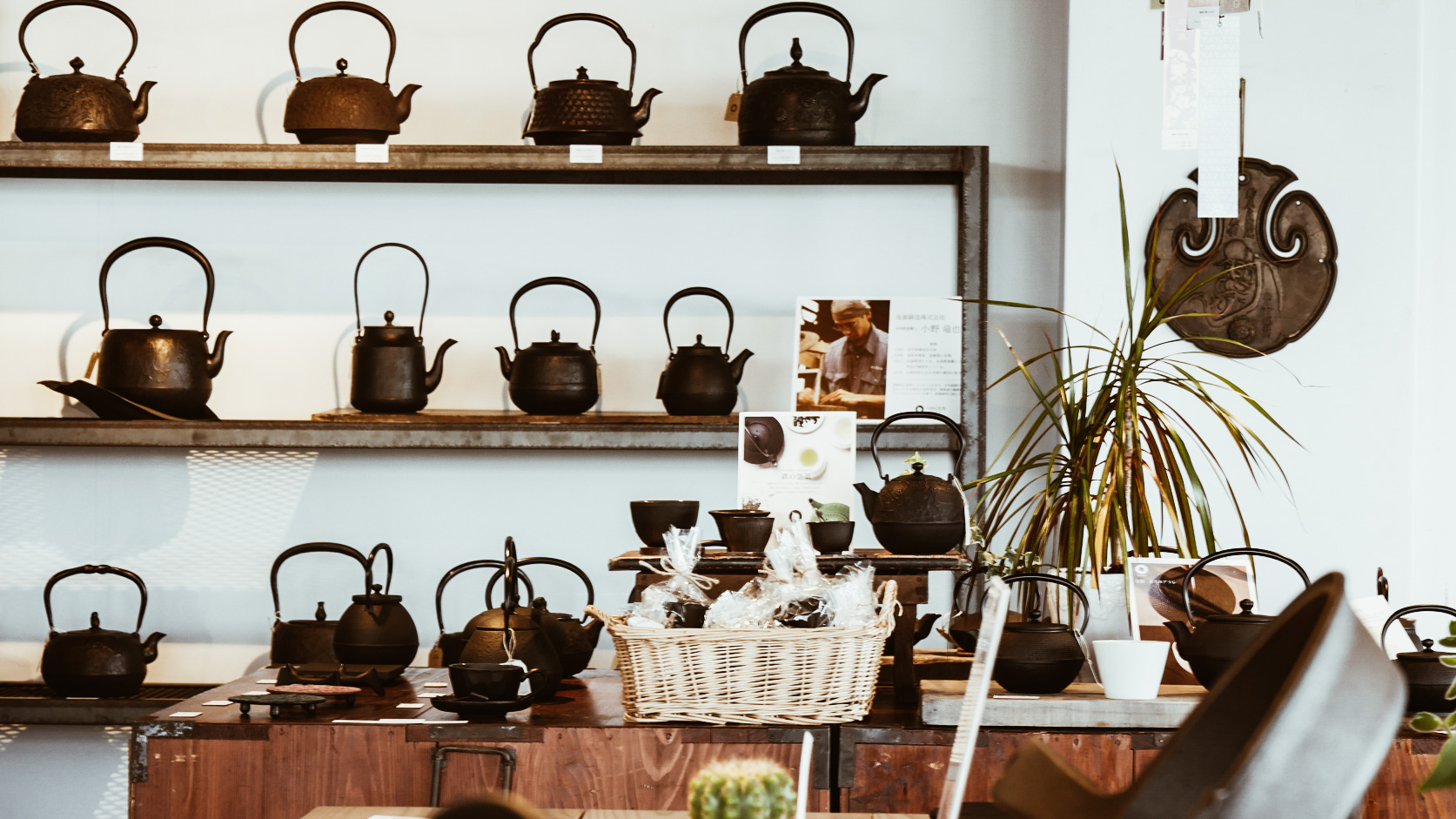
Rust-resistant, durable and well-insulated, these objects provide uniform heat circulation. In fact, the outside of the kettles has an irregular texture called ploughing or hail. This is often used in Nambu ironware dishes and kettles are the representative product. However, the various models change from artisan to artisan because each artist is free to create his or her own model at will.
The History of Nambu ironware
Nambu ironware products sink their history into the production of tableware for the Tea Ceremony during the homonymous domination in the middle of the 17th century. Thanks to the abundance of iron resources, Morioka was a perfect area for the foundry industry.
In fact, in 1659, a feudal lord who wanted to promote the tea ceremony ordered Nizaemon Koizumi to move to Kyoto. It was here, in the area around the castle in Nambu, that the kettles began to be made.
The Koizumi family
Craftsmen par excellence during the Nambu domain, this family launched for the first time the pots used for the tea ceremony. The tea casting technique and control were passed down from father to son. Not only traditional products, but this family was also the focus of innovations for the time. In fact, the famous Nambu Iron Kettle was invented by the third generation of the Koizumi family. The Taisho Emperor himself, who reigned from 1912 to 1926, visited the Tohoku region for this family. In fact, in 1908, on the occasion of the visit, the eighth generation of the Koizumi showed the emperor the production process of these iron tools. This event was so famous that all the national newspapers of the time talked about it. In fact, even today, all the pieces produced in the Morioka and Mizusawa areas in Iwate are still called "Nambu Ironware".
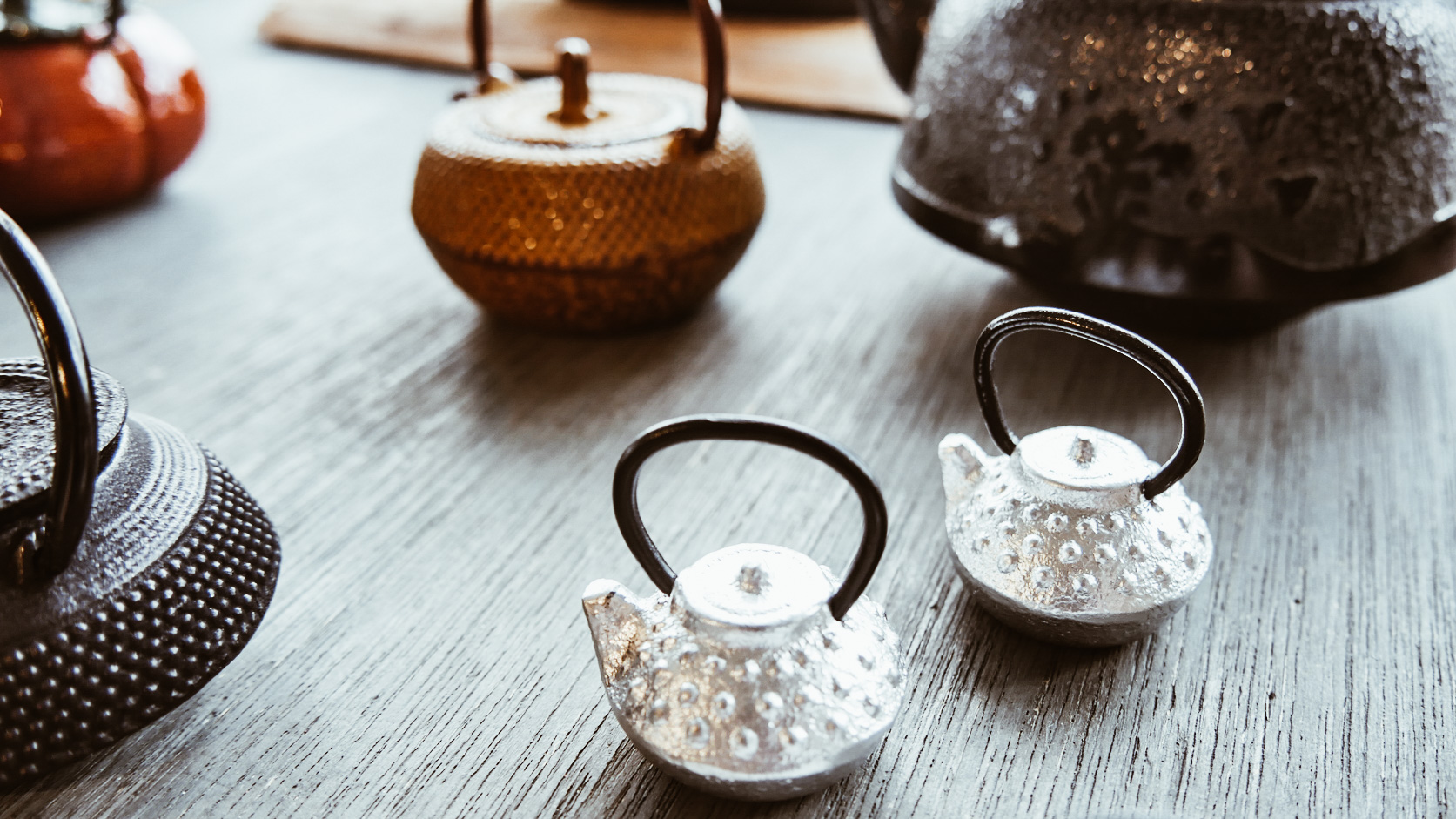
More than just tea
Although the products related to the tea ceremony are the most famous among the Nambu ironware, there are many other items related to the home that can be purchased. In fact, Western kitchen cooks know that one of the best investments you can make is a cast iron frying pan.
However, other Nambu ironware items that are worth buying are the furin (the Japanese windchimes), incense holders, small decorations but also chopsticks holders.

Have you ever bought any of these items or would you like to take some? Let us know in the comments or on our Facebook page!
Photo Gallery: Kyoto without tourists
The pandemic is slowly passing and the tourism industry in Japan, as well as in Italy, has suffered a severe blow. We are not yet entirely allowed to resume travelling, but it is at these times that we have to find the beauty of things. We also refer to the possibility of being able to discover landscapes and corners of cities that we could not see before, often also because of tourists. As a highly desirable destination for tourists, Kyoto has developed a love-hate relationship with visitors. With 8.31 million tourists from overseas, the ancient capital is definitely one of the most popular cities in Japan.
Kyoto without tourists, a leap into the past
Author: Erika | Source: The Japan times
However, tourism is always a bit of a double-edged sword. While it prunes a lot of revenue to the visited countries, it also leads to overcrowded cities. In tourist places like Kyoto, it is really rare to be able to enjoy the landscapes without visitors. Nevertheless, due to COVID-19 and the closing of world borders, the number of visitors has dropped dramatically, leaving many of these places undisturbed. Through these photos, taken by the reporters of The Japan Times at the end of April, we can see a deserted city and admire its monuments in all their splendour.

One of the most famous sites and destination of many tourists is certainly the Kinkakuji, also known as the Temple of the Golden Pavilion. Declared a UNESCO World Heritage Site in 1994, this landmark has more than 5 million visitors a year. The current pavilion dates back to 1955 after the original was burned by a novice monk. However, the complex dates back to the 14th century. - Photos by Oscar Boyd

Fushimi Inari, a destination that every year attracts about 2.7 million visitors, a landmark known for its senbon torii (1000 torii, even if in reality they are 10 thousand in total), was like this. Those who have been there are aware that to be able to take such a picture under normal conditions you have to go there very early in the morning and wait several minutes to get the perfect shot of the empty tunnel. The photographer Gabriele Bortolotti took this picture at noon, in a deserted sanctuary at the end of April.

Nishiki's market, also known as "Kyoto's Kitchen" stretches for about 1.5km between Teramachi and Shinmachi districts in Kyoto. Among the increasingly popular souvenir shops, knife shops, the headquarters of traditional Japanese food suppliers and everything related to the kitchen, Oscar Boyd took this photo.

We move on to the wooden architectural tradition of Higashimaya. This area is very popular among people looking for a traditional Japan, without cement, glass and neon. This is how it looked under the eyes of Oscar Boyd at the end of April 2020.

Ginkakuji, the Silver Pavilion, built in the 15th century in the style of the Golden Pavilion, was not originally covered with the precious material. The complex has since become famous for its large Japanese garden which attracts around 5 million visitors every year. - Photos by Gabriele Bortolotti
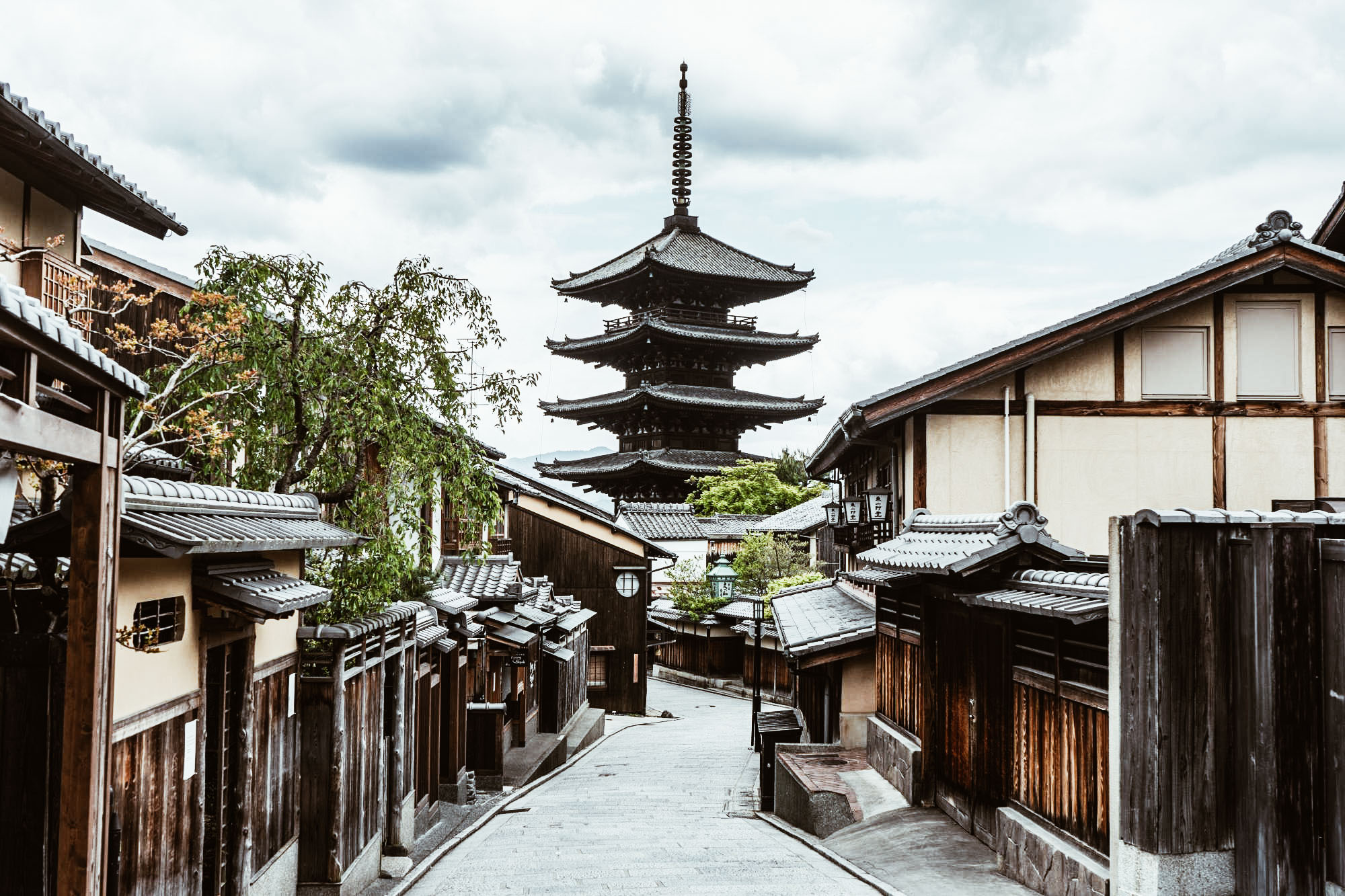
The Yasaka Pagoda, one of the landmarks of the upper area of Higashimaya District, the last permanent structure of the 6th century Hokanji Temple looked like this at the end of April. - Photos by Oscar Boyd
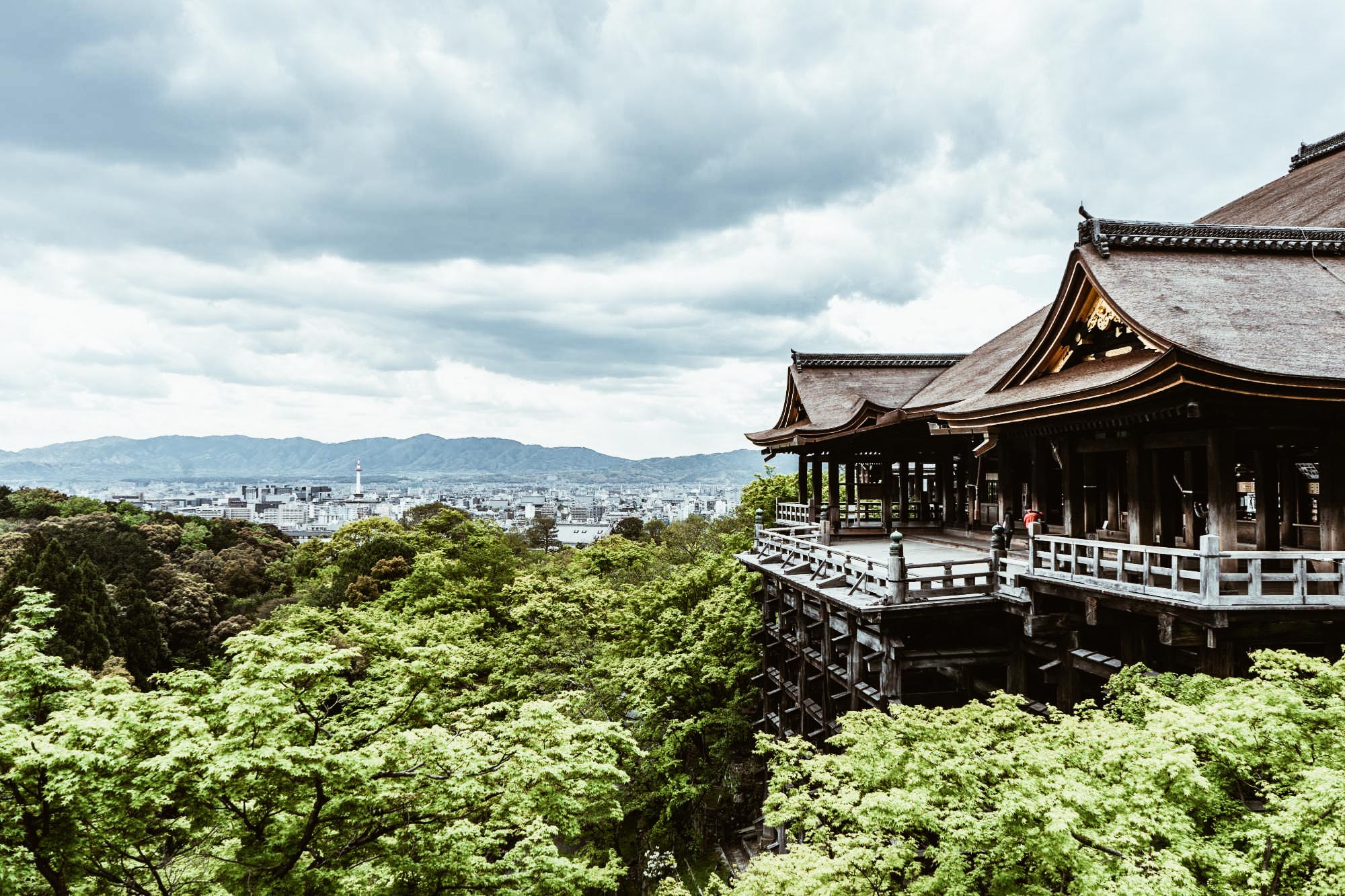
A UNESCO World Heritage Site, the Kiyamizudera temple on the side of Mount Otowa, in the eastern part of Higashimaya district is one of the landmarks not to be missed by visitors to Kyoto. Founded in 780 and rebuilt after a fire in the 15th century, work on the Okunoin Hall was completed in March. The temple attracts about 5 million tourists every year and yet in this weird 2020, it was completely empty. - Photos by Oscar Boyd







